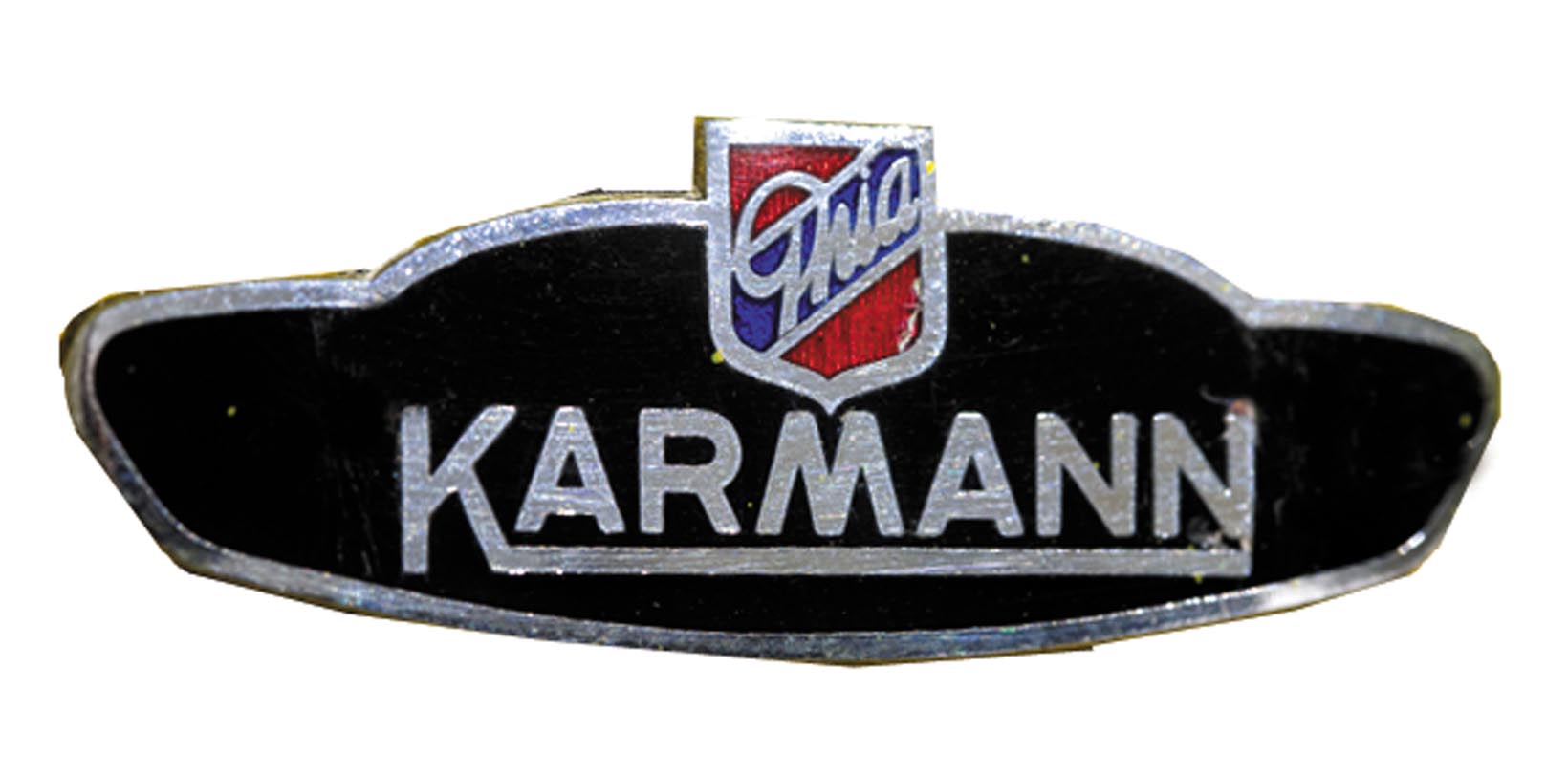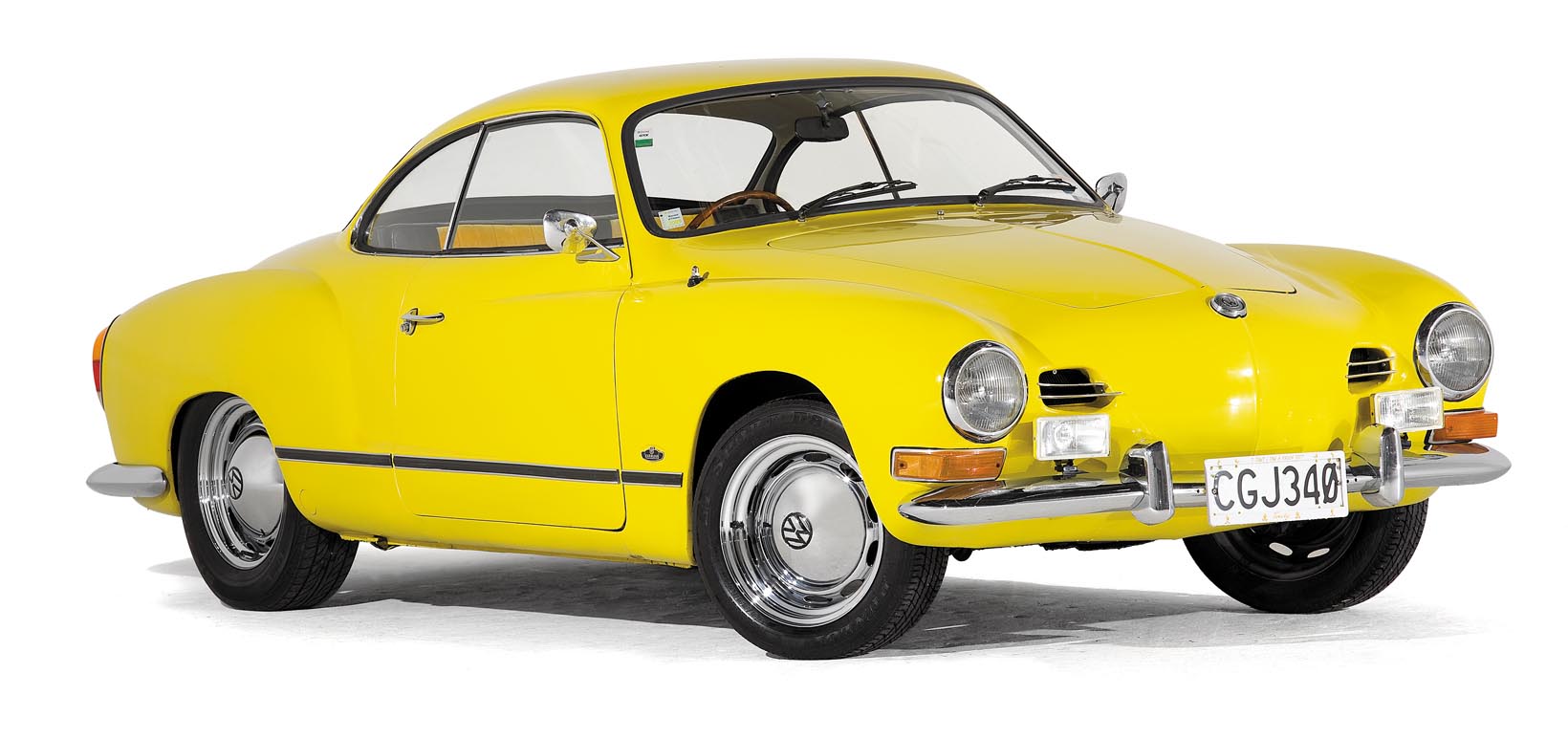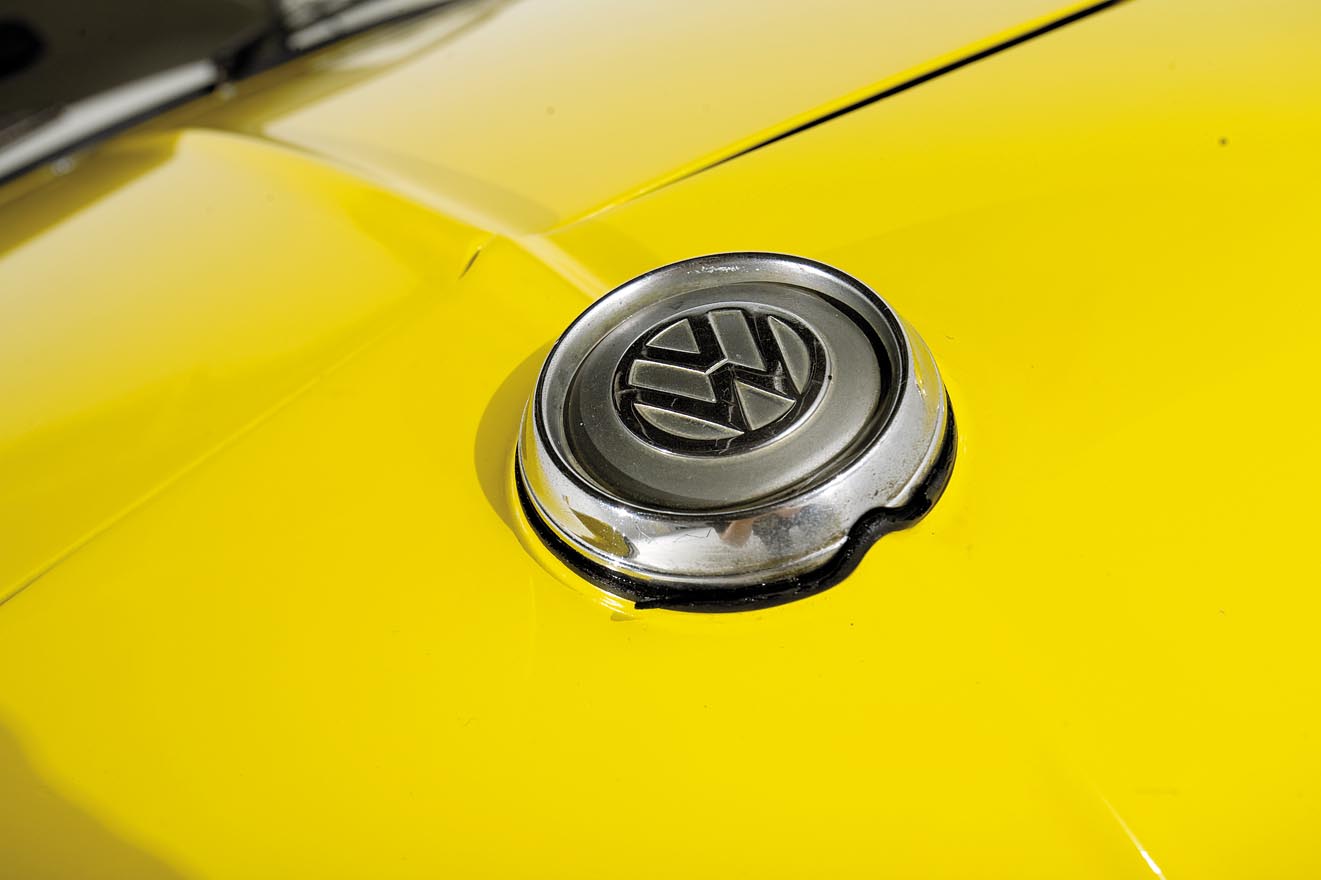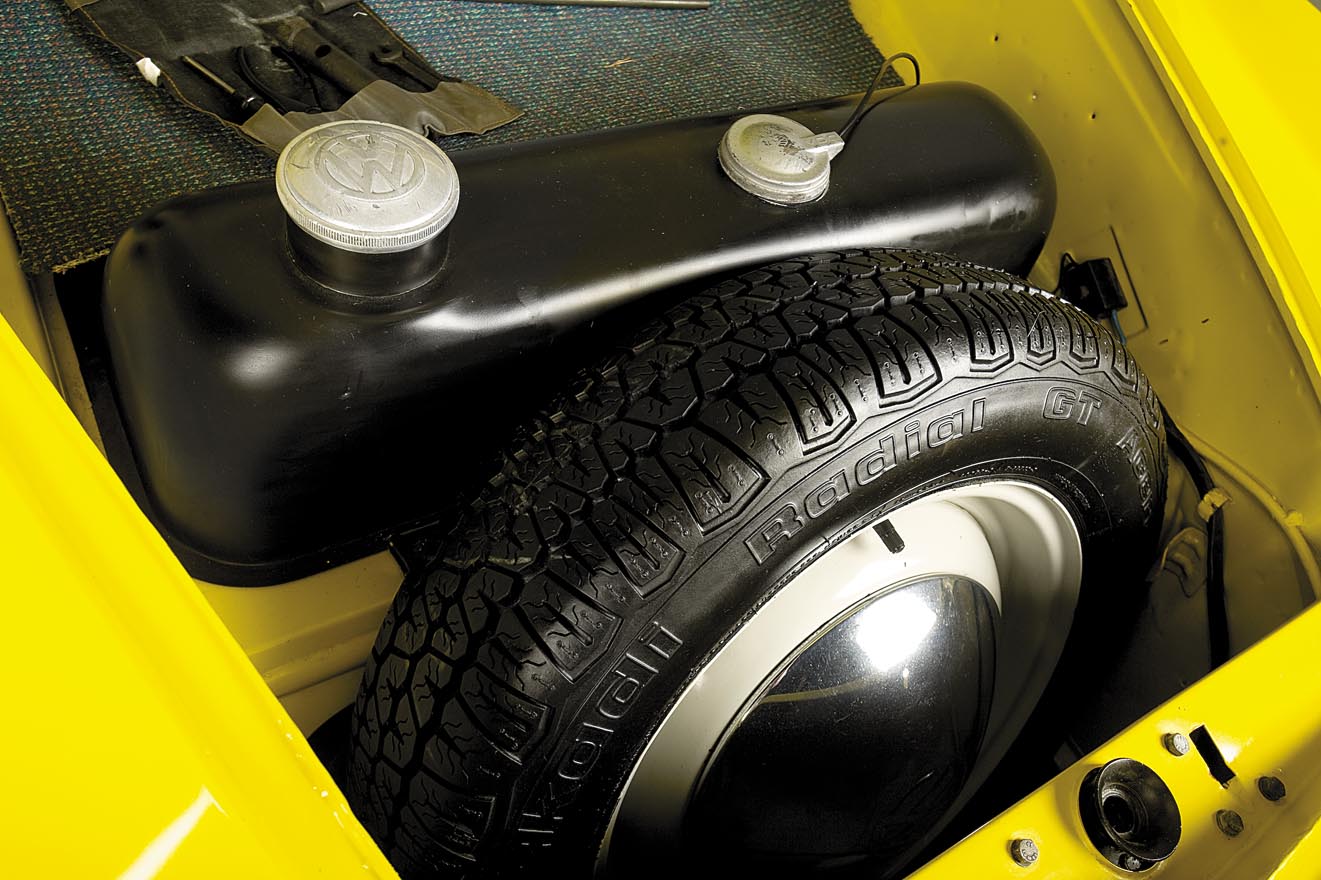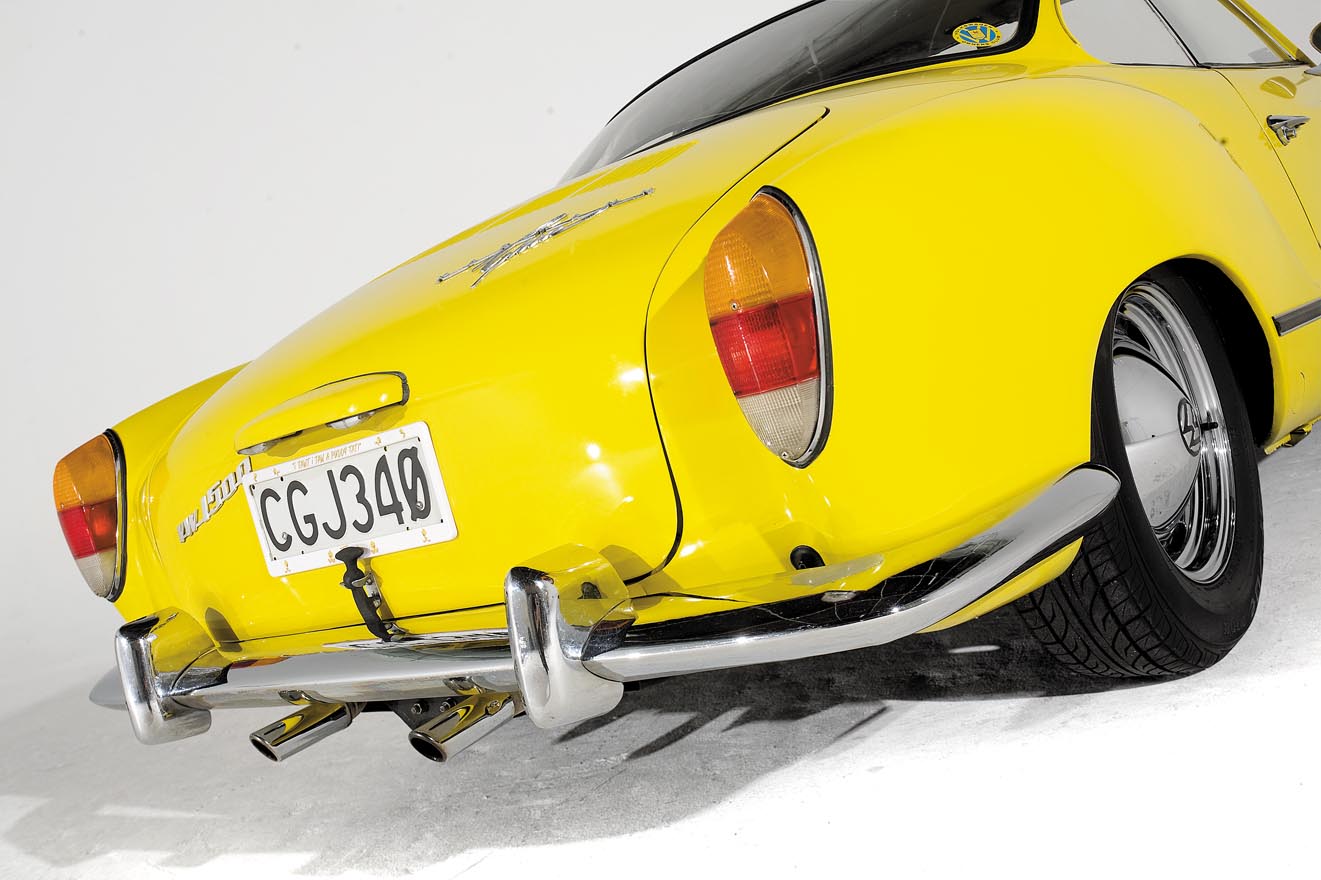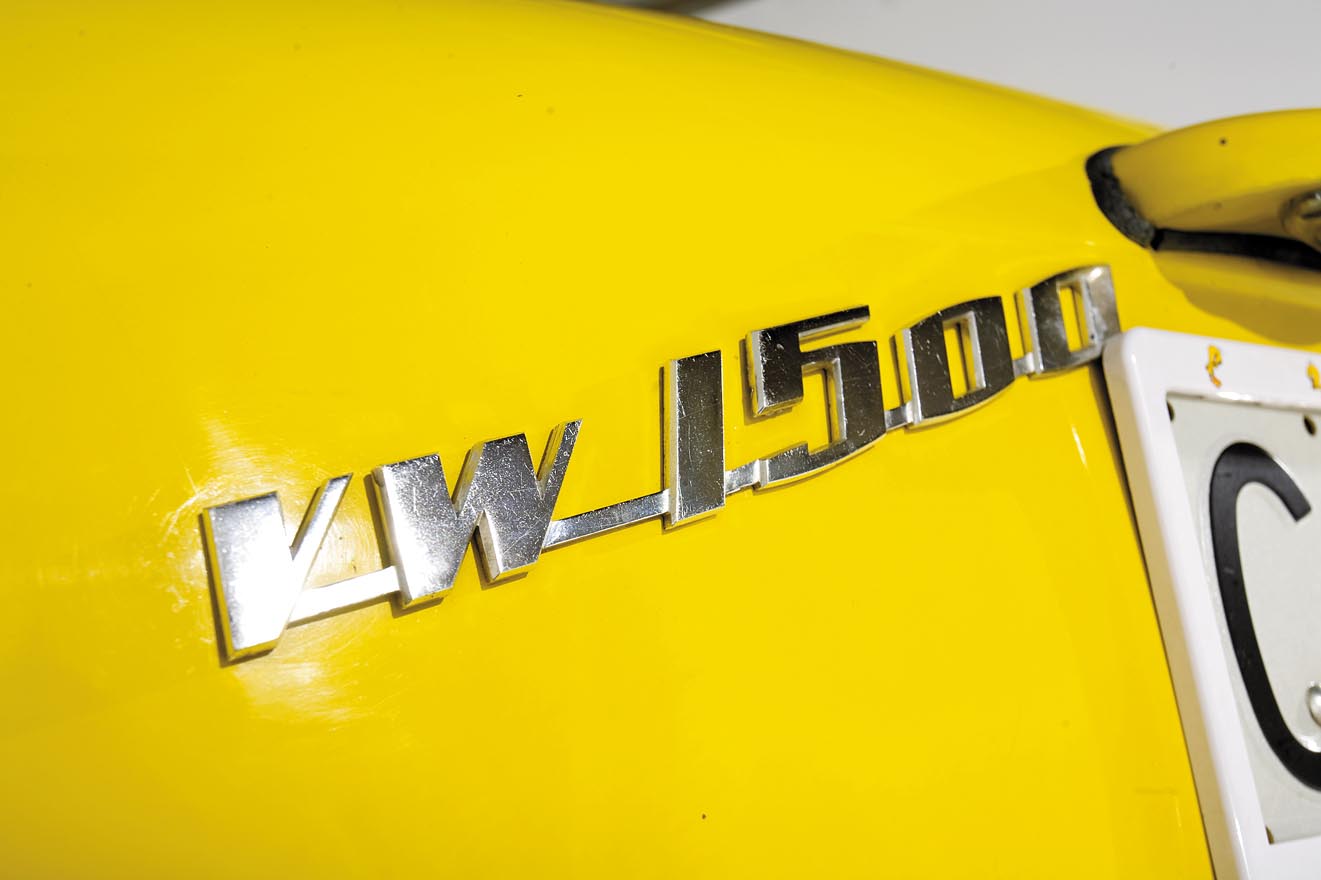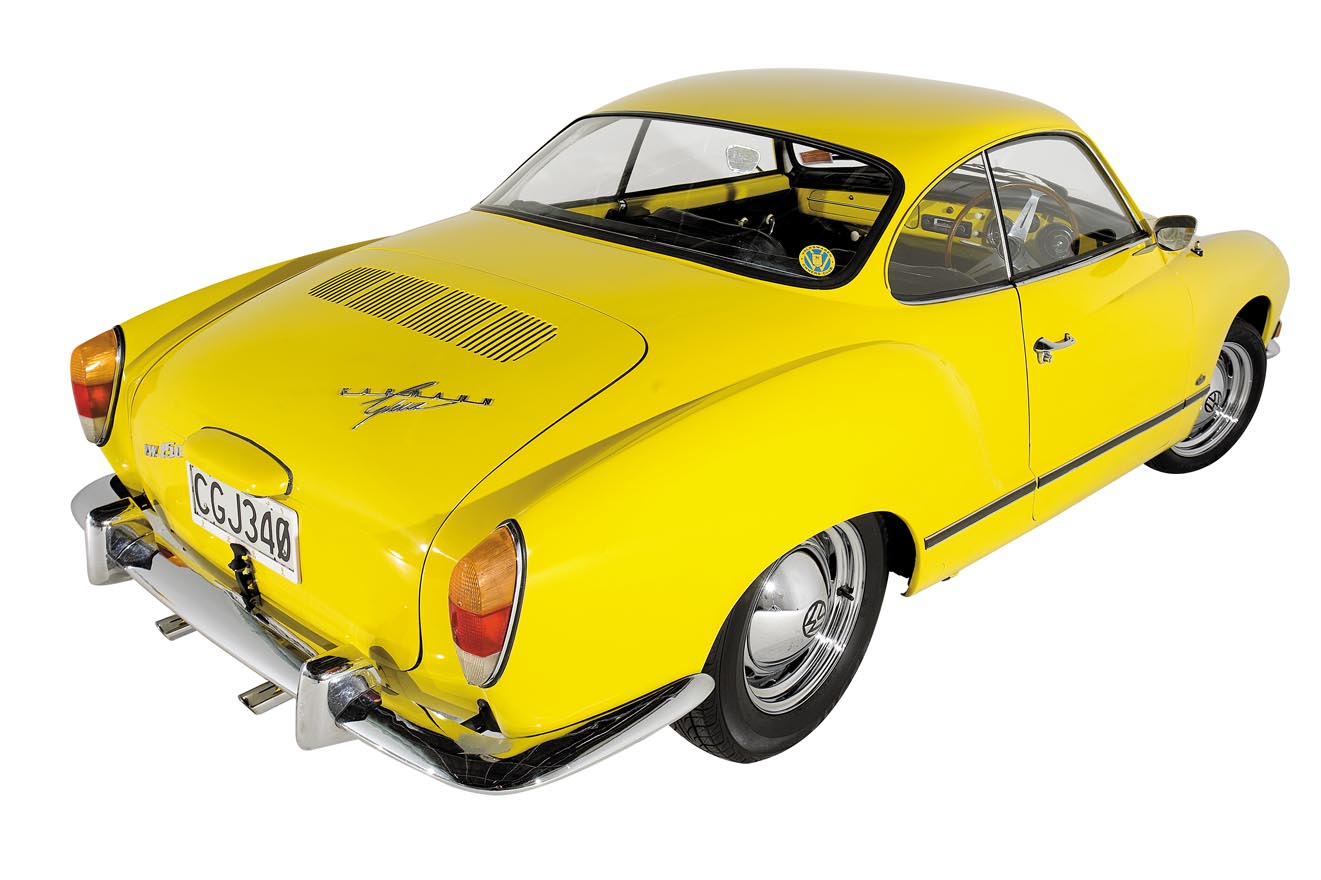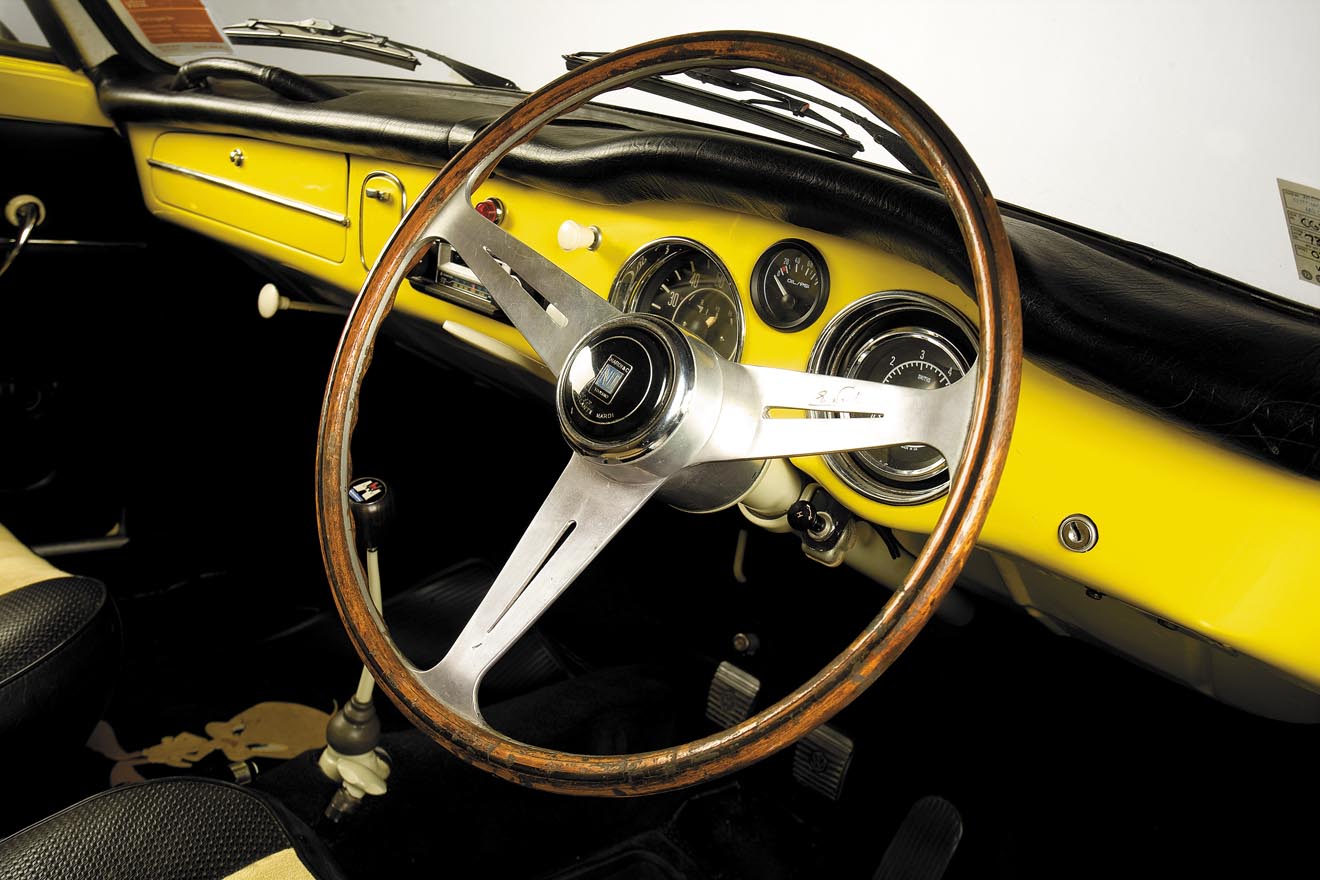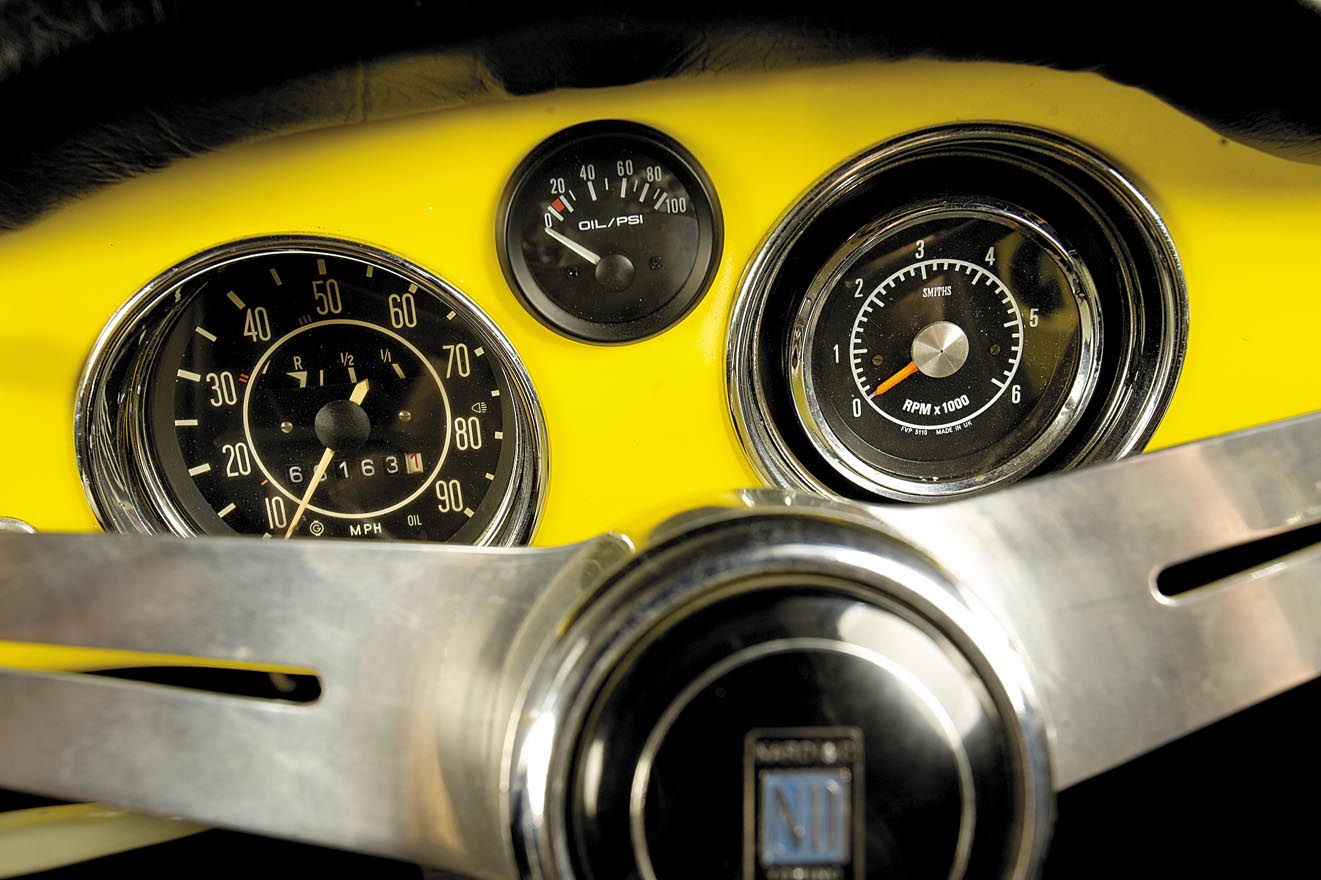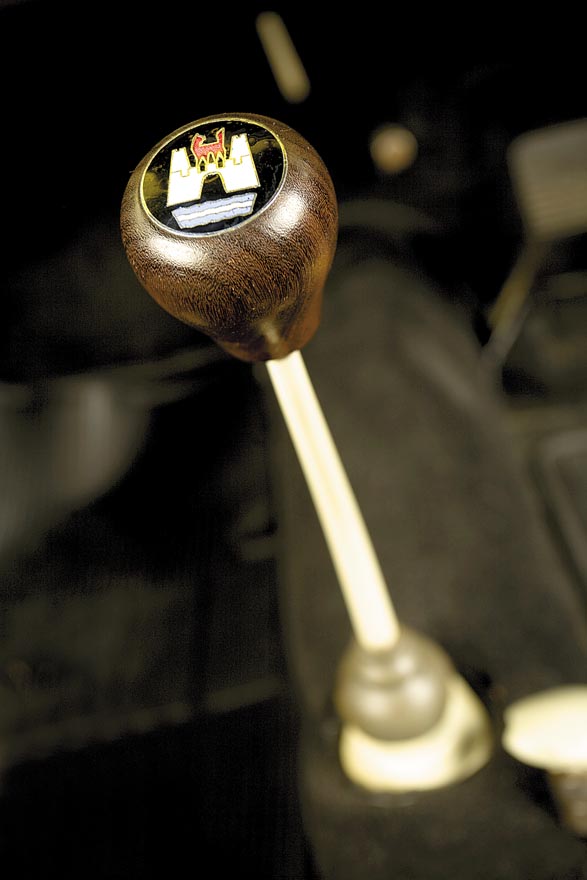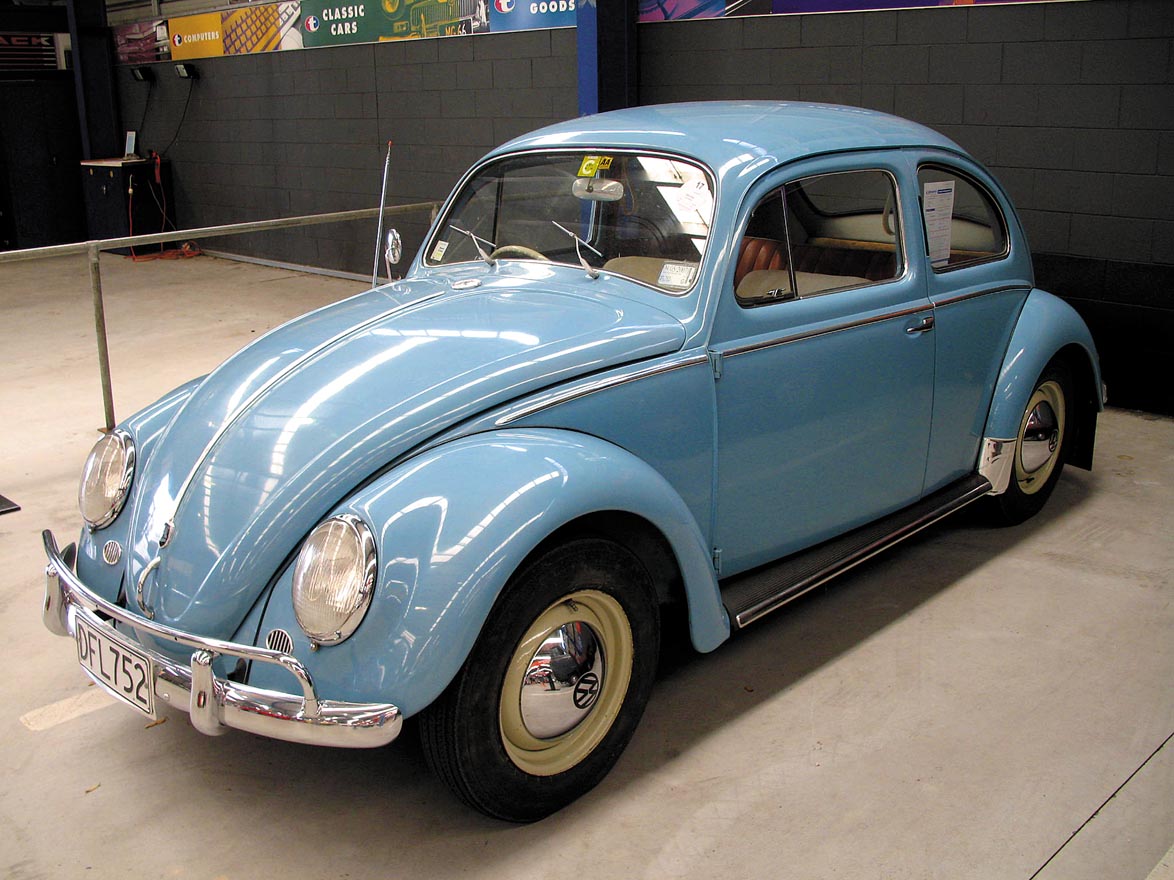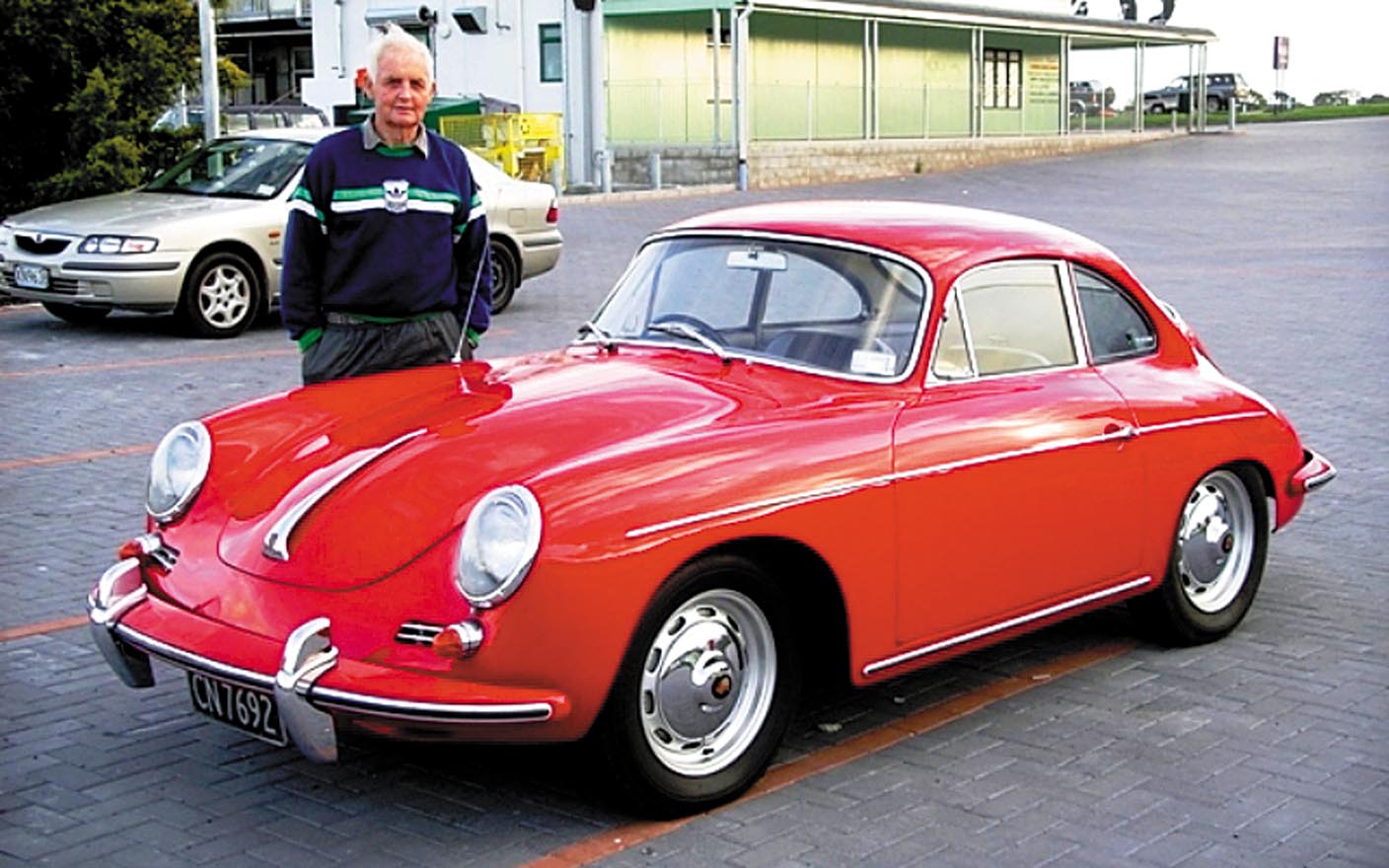data-animation-override>
“Published in New Zealand Classic Car Issue No. 222”

Originally built by famed Kiwi grass-track and hill climb specialist, Doug Bremner, this stylish coupe now goes as well as it looks
The Karmann-Ghia’s origins are somewhat clouded by myth, hearsay and speculation, with both an Italian and a US stylist claiming credit for this classy ’50s coupe.
Virgil Exner’s claim is that the Karmann-Ghia’s styling was cribbed from his earlier Chrysler d’Elegance. However, there are those who believe that Boano provided the design impetus for the Karman-Ghia. This is certainly backed up by several Boano-designed cars which predate the Karman-Ghia — the Alfa Romeo 6C2500S convertible of 1949, and the Lancia Aurelia limousine from 1950. Indeed, some have noted that it is quite probable that Exner’s d’Elegance car drew its inspiration from Boano, who took over Carozzeria Ghia in 1944.
Interestingly, Ghia built Chrysler’s d’Elegance show car in 1953, and then went on to produce 400 GS1 d’Elegance look-alike cars for Charles Ladouche’s Societe France Motors, a company based in Paris which specialized in importing VW and Chrysler vehicles.
However, styling issues aside, what isn’t under dispute is that the Karmann-Ghia project was developed under a cloak of secrecy, and began when Luigi Serge of Ghia purchased a standard VW Beetle from Charles Ladouche in early 1953.
Ghia then built a prototype on the Beetle’s chassis and showed off the results to Karmann — the German coach-building firm which had already made a name for itself by designing and producing a cabriolet based on the VW Beetle.
In turn, Karmann presented the car to VW. The response was immediate and a deal was quickly struck — Karmann would build the new coupe, and VW would sell it. The first car was produced in June 1955, essentially little more than a stylish, coupe version of the standard Beetle and christened as the Karmann-Ghia after a suggestion by Dr Karmann.
More Power
In September 1955, the Karmann-Ghia was officially launched at the Frankfurt Motor Show and immediately received accolades for its smoothly rounded styling.
Many reviewers instantly labelled the new car as a distinctive fashion statement — automotive haute couture. This was probably a good thing. The chic coupe may have added aerodynamic refinement to the upright Beetle, but the Karmann-Ghia’s performance only offered a marginal improvement over the iconic saloon. To be sure, it shaved over 10 seconds off the Beetle’s 60mph time — but 35 seconds was hardly drag-strip material. As well, the Karmann-Ghia’s 1192cc air-cooled four-banger — delivering a measly 22kW (30bhp) — meant that reaching the car’s supposed maximum speed of 120kph (74mph) probably required a downhill stretch of road and a strong tailwind.
During the course of its long production life, the Karmann-Ghia coupe (joined by a cabriolet model in 1957) gained larger engines and more power — the final 1974 models being powered by a 37kW (50bhp) 1584cc air-cooled VW motor.
However, there were many VW enthusiasts who craved more power still, and began turning to air-cooled Porsche-power for their vehicles. With the 1959 introduction of the Chevrolet Corvair — powered by an air-cooled six-cylinder engine — another avenue was opened.
Grass Track Champion
This is an appropriate time to bring the name of Doug Bremner into our story.
During the ’60s, the Manurewa-based Bremner was a foreman mechanic at P & R Motors in Papakura, South Auckland — a company owned by two famous motor racing legends, Paul Fahey and Ralph Emson. Fahey’s race cars were renowned for their speed and reliability, a factor which Fahey always credited to his extremely efficient service team. Indeed, Fahey was probably one of the first Kiwi racers to bring an air of professionalism into the local racing scene — and, behind the scenes, Doug Bremner was one of those who helped to secure Fahey’s predominant position on the national racing stage.
However, Bremner wasn’t content to simply sit in the wings, forging his own, very successful motor sport career. He was an early member of the Auckland Car Club and Bremner, usually co-driving with one of his bosses, Ralph Emson, also became something of a endurance racing specialist, competing in many Wills Six Hour and Benson & Hedges 500 races in a variety of cars. In 1965, Bremner and Emson finished third at the B&H 500 in their Alfa Romeo saloon, only beaten by the winning 3.8 Jaguar and the similar Alfa Romeo driven by Ross and Syd Jensen.
Bremner’s finest circuit achievements came in 1967 and 1968 when he shared the driving of a tiny Simca 1000 with Emson at the B&H 500. Despite only delivering 37kW (50bhp) from their 944cc engines, the Simcas took the top three places in the under 1000cc class in 1967. The following year they went one better, taking out the top four places in their class. Each time, the leading Simca was driven by Doug Bremner and Ralph Emson.
Subsequently, Bremner would also compete successfully on the circuit in cars such as the Fiat 1500, Triumph 2500PI, Holden Torana and Mercedes.
Despite his successes in circuit and long distance saloon racing, Bremner is probably best known for his grass-track and hill climb exploits — and it is at this point that he became linked with the VW marque.
During the early ’60s Bremner quickly became the man to beat on local grass tracks, and the car he drove was a VW Beetle into which he had grafted the Porsche 90 engine from his own 356.
When he first began grass-track racing there was really only one established venue in the North Island — Raglan. However, as paddock racing became more popular, more grass-tracks were added, and it wasn’t long until the informal series of races were added together to form the DR Filter Grasstrack Championship — with rounds being held in Whangerei, Raglan, Kerepehi and Rotorua. Later, a further round would be added at Taupo.
Bremner scored his first major win in the championship during the 1965/’66 season. Indeed, as well as securing the Grasstrack Championship he would be beaten only once during 30 race meetings, and he began to amass a sizeable collection of trophies and awards.
The Porsche-powered Beetle also proved remarkably successful on the hill climbing circuit, and Bremner was soon notching up wins at various North Island hill climbs.

As well, racing was very much a family affair for Bremner, and his wife and their daughter would accompany him to the race circuit — indeed, Mary Bremner also proved a successful pedaller, competing in several sprint races in her husband’s VW.
Following a major road accident — in which he suffered head and internal injuries — Bremner was forced into temporary retirement, only emerging four months later in winning style when he set the fastest time of the day at the Auckland Car Club’s Chamberlain Road hill climb.
As on the grass tracks, Bremner proved a force to be reckoned with in hill climbing and, on one notable occasion, he even managed to beat Jim Boyd’s legendary Lycoming Special. Indeed, many of the hill climb records set by Bremner still stand to this day.
Corvair Power
Searching for more power, Bremner eventually returned the Porsche motor back to his 356, and in its place he dropped a Chevrolet Corvair motor into his trusty old Beetle. With the Corvair’s six-cylinder, air-cooled engine in situ Bremner continued his winning ways, including scoring the Goldstar Hillclimb Saloon Championship for 1973-’74.
Bremner also raced the VW-Corvair on circuits such as Pukekohe and Teretonga, often in the company of his best friend, Ian Bloxham, who raced a very quick VW Beetle.
Bloxham’s car was probably the first NZ-based Beetle to take advantage of an Okrasa performance kit. VW enthusiasts will know of Okrasa, but for those less familiar with VW folklore — Oettinger Kraftfahrtechnische Spezial Anstalt was the name of the company founded by Gerhard Oettinger in 1951 to specialise in performance parts for the VW. Two Okrasa kits were available — the TS-1200 and the TS-1300/30. These kits became popular in the US during the mid ’50s, and both offered tangible performance benefits, boasting a 30 per cent increase in power — giving the Beetle performance on a par with a period Porsche 356.
Karmann-Ghia-Corvair
Following his eventual retirement from front-line racing, Doug and Mary Bremner settled down in Drury, but Bremner continued his love affair with the motor car — tinkering with the cars in his collection, which included two Beetles (1954 and 1958 models) and the Porsche 356 which had originally donated its engine to his VW-Porsche.
As a reminder of his B&H racing days, he also owned a Holden Torana GTR XU-1.
Bremner’s final project, before succumbing to cancer in July 2006, was our featured Karmann-Ghia.
Using the experience he had gained with his championship-winning VW-Corvair Bremner he completely restored the Karmann, turning his chic and stylish coupe into a genuine performance car.
As a side note, Bremner’s Corvair-Beetle was sold to Rod Atkinson of Waiuku, who still campaigns this car very successfully in local events.

Very few Corvair-powered Karmann-Ghias have been built, but this was one project that Bremner had always promised himself he would undertake. A full body-off restoration was completed on the car, with all panel, paint and mechanical work being handled by Bremner in the same home workshop that he had used to restore several vintage cars during the course of his retirement.
The results, as you can see, are quite stunning. Apart from the obvious addition of Porsche 356 wheels, this car looks remarkably original — the surprise comes when you pop the engine cover or, indeed, when the Corvair motor is fired into action; no VW in the world sounds as good as this car!
Following his death, Bremner’s two Beetles were sold by Turners Auctions while the Porsche and Torana were passed onto his children. The Karmann-Ghia also remained in the family, with Doug’s younger sister, Elaine, purchasing it with her husband, Terry.
For Elaine, the acquisition of her brother’s final project car holds great sentimental value — a fitting reminder and tribute to one of New Zealand’s best grass-track and hill climb competitors.
Trouble Free
Today, the Chevrolet Corvair enjoys cult status in the US — despite having been roundly criticised in Ralph Nader’s infamous book, Unsafe At Any Speed — and the Corvair’s engine has since become a favourite repower option for those seeking extra horses for their VW saloon, Kombi or beach buggy. It is still possible to buy VW conversion kits for the Corvair engine in the US — the conversion involves a gearbox adaptor plate, flywheel and a ‘reverse rotation’ camshaft and distributor drive which allows the Corvair engine to run in reverse (clockwise) direction, so that it can be successfully mated with the standard VW transmission.
Doug Bremner’s home-built Karmann-Ghia-Corvair now lives a life of luxury with Terry and Elaine — they try to avoid taking it out on rainy days and, as Terry points out, using all the car’s 104kW (140bhp) on wet roads is something that can only be done with a certain amount of care.
However, the Ghia receives regular weekend use. It has covered around 8000 kilometres over the last 2½ years and has been present at many local and national car shows and events — their most recent trip being a trouble-free and enjoyable journey to the VW Nationals in the Hawkes Bay.
Specs
1957 VW Karmann-Ghia-Corvair
Engine: Chevrolet Corvair air-cooled, horizontally-opposed six-cylinder
Capacity: 2687cc (164ci)
Fuel System: Four Rochester carburettors
Max power: 104kW (140bhp) at 5200rpm
Max torque: 217Nm (160lb/ft) at 3600rpm
Wheels: Porsche 15-inch chrome
Tyres: Dunlop 195/55R15 (front); 195/70R15 (rear)

